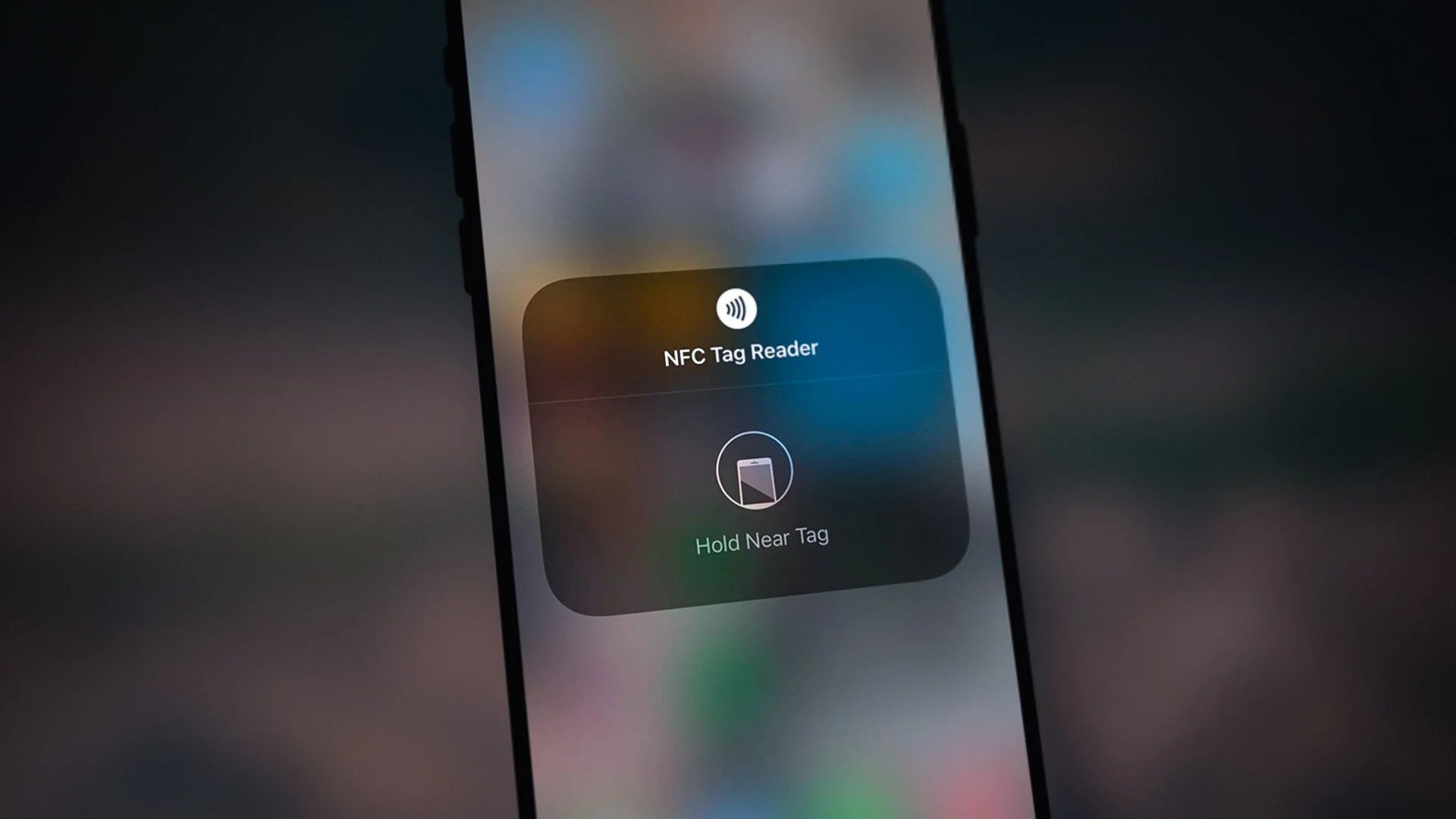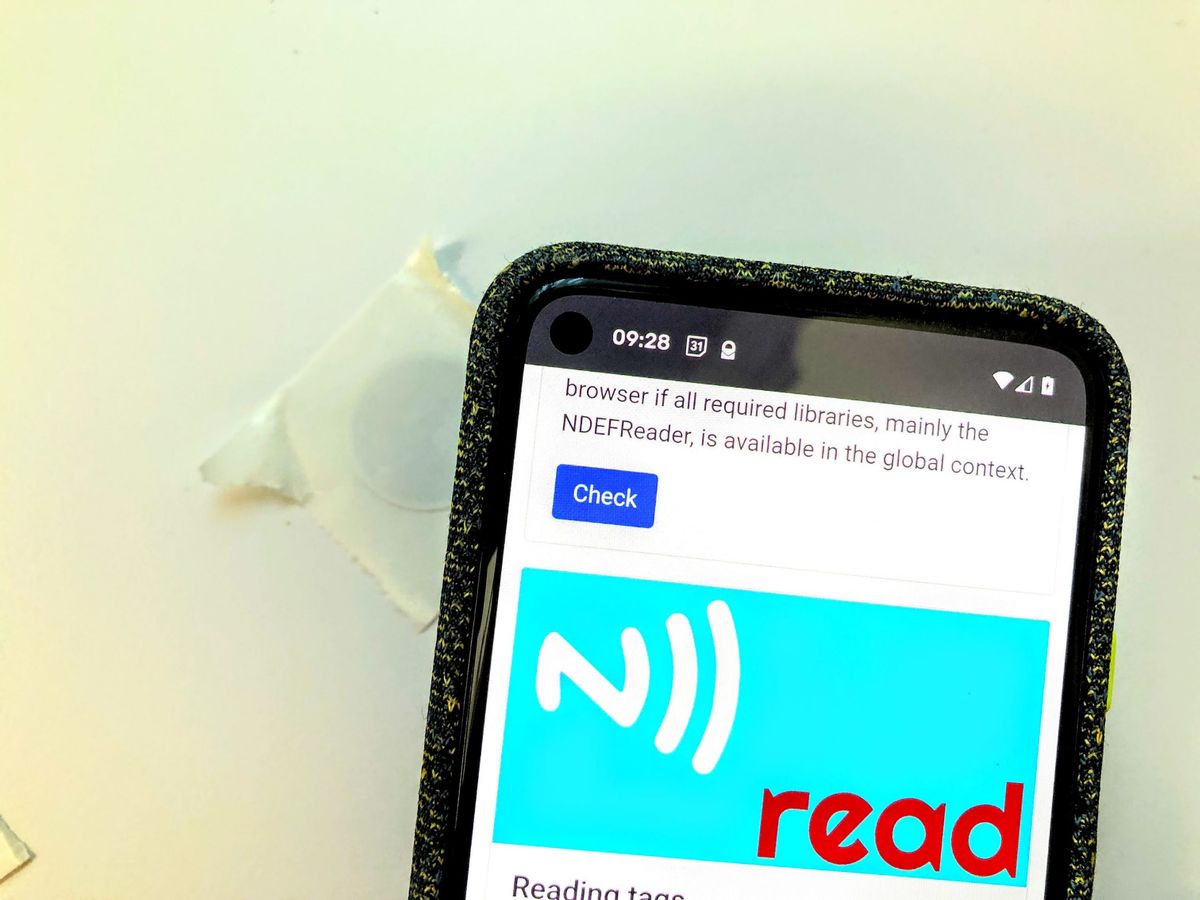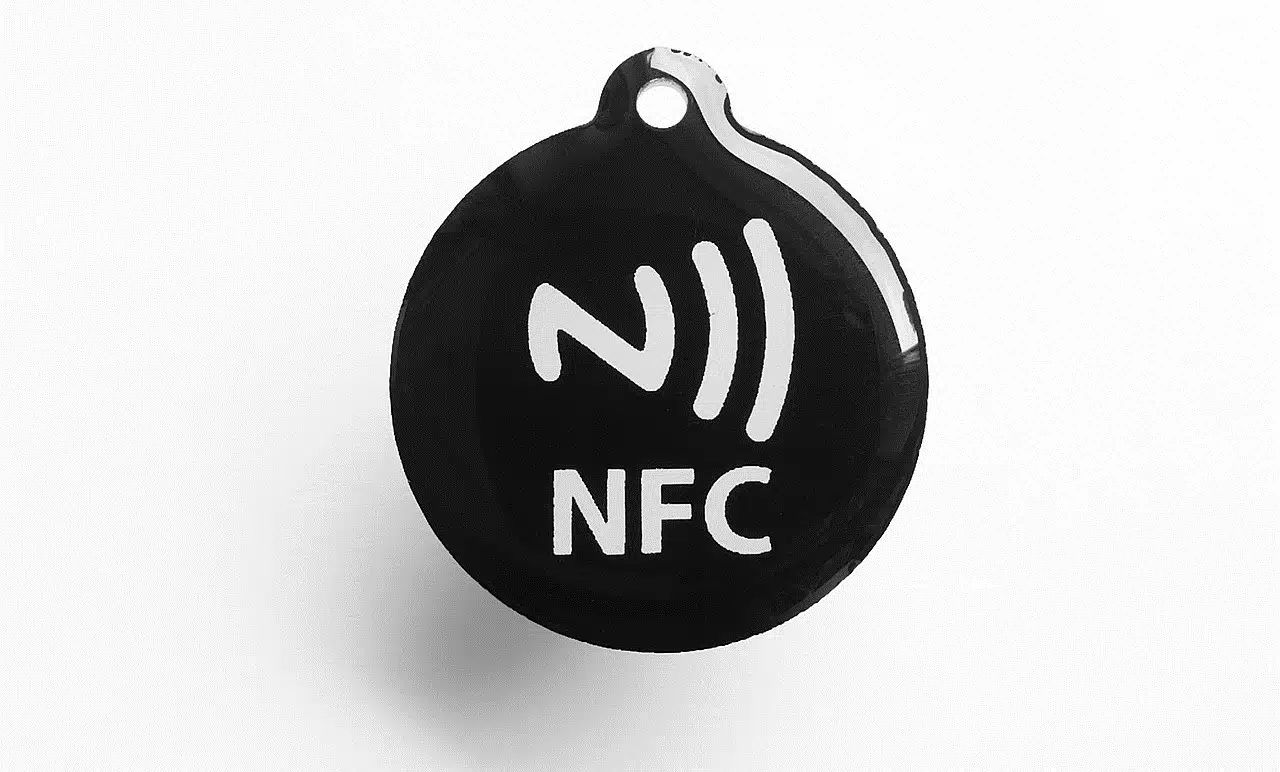Introduction
NFC (Near Field Communication) technology has become increasingly popular in recent years due to its versatility and convenience. This wireless communication technology allows devices to establish a connection by simply being in close proximity to each other. NFC tags, in particular, have become a common application of NFC technology, offering a wide range of possibilities in various industries.
NFC tags are small, programmable devices that can store and transmit information wirelessly. They work on the principle of radio frequency identification (RFID), allowing for contactless communication between an NFC-enabled device, such as a smartphone or tablet, and the tag. This communication is swift and requires no physical contact, making it ideal for quick and seamless interactions.
The functionality of NFC tags is not limited to a specific type of information. They can be programmed to contain various types of data, including text, URLs, contacts, payment information, and more. When an NFC-enabled device comes into close proximity to an NFC tag, it can read the stored information or perform specific actions based on pre-defined instructions.
NFC tags work by utilizing electromagnetic induction to transfer data between the tag and the NFC-enabled device. The NFC tag contains a small microchip and an antenna that allows it to communicate with the device. When the device comes close, it generates a radio frequency field that powers the tag and enables data transfer through back-and-forth communication.
There are different types of NFC tags available, each with its own unique features and capabilities. Some tags are read-only, meaning they can only store and transmit data, while others are rewritable, allowing for multiple uses and updates. The storage capacity of NFC tags can vary, ranging from a few kilobytes to several megabytes, depending on the specific tag.
NFC tags have found numerous applications across various industries. They are commonly used for contactless payments, access control systems, public transportation, product information and authentication, and even smart advertising. By simply tapping their NFC-enabled devices on the tag, users can access relevant information, make payments, unlock doors, or perform other predefined actions.
One of the key advantages of NFC tags is their ease of use. They require no manual pairing or complex setup. Simply bringing the device close to the tag triggers the interaction. Additionally, NFC tags are cost-effective and require minimal power, making them suitable for a wide range of applications.
However, NFC tags do have some limitations. The range of communication between the tag and the device is relatively short, typically ranging from a few centimeters to a few meters. NFC tags also rely on the availability of NFC-enabled devices, limiting their functionality in certain situations.
Overall, NFC tags have revolutionized the way we interact with technology, offering a convenient and efficient solution for various applications. Their versatility, ease of use, and ability to transfer information wirelessly make them ideal for enhancing user experience and streamlining processes in a wide range of industries.
What is NFC?
Near Field Communication (NFC) is a wireless communication technology that allows devices, such as smartphones, tablets, and other electronic devices, to establish a connection by being in close proximity to each other. NFC operates on the principle of electromagnetic radio field, enabling quick and seamless communication between devices without the need for physical contact or complex setup.
NFC technology utilizes radio frequency identification (RFID) and builds upon the existing RFID standards to enable secure and efficient communication between devices. It operates within a frequency range of 13.56 MHz, which is globally accepted and regulated by international standards organizations.
NFC enables two-way communication, allowing for information exchange between devices. This two-way communication sets NFC apart from other technologies like Bluetooth or Wi-Fi, which typically focus on one-way data transfer.
In addition to communication between devices, NFC also enables devices to interact with passive NFC tags. NFC tags are small, programmable devices that can store and transmit information wirelessly. These tags can be embedded in various objects, such as stickers, cards, or even products, providing a convenient and efficient way to transfer information between devices and objects.
One of the distinguishing features of NFC technology is its short-range communication. The range between NFC devices or between an NFC device and an NFC tag is typically limited to a few centimeters up to a few meters. This proximity-based communication ensures enhanced security, as it reduces the risk of unauthorized access or interception of data.
NFC technology offers various advantages, such as speed, convenience, and simplicity. The setup and connection process between NFC-enabled devices are quick and hassle-free, requiring only a simple tap or bringing the devices close to each other. This ease of use has made NFC technology widely adopted for contactless payment systems, access control, public transportation, and other applications that require quick and secure communication.
Overall, NFC technology is a versatile and efficient wireless communication standard that has gained popularity due to its ease of use and broad range of applications. From mobile payments to smart advertising, NFC technology continues to revolutionize the way we interact with devices and objects, providing a seamless and secure experience for users.
What are NFC tags?
NFC tags are small, programmable devices that contain an embedded microchip and an antenna, allowing them to wirelessly communicate with NFC-enabled devices, such as smartphones, tablets, or other NFC readers. These tags operate based on the principles of radio frequency identification (RFID) and near field communication (NFC), offering a convenient and contactless method of transferring information.
NFC tags come in various shapes and sizes, including stickers, cards, keychains, and even embedded in products. They can be easily attached to objects or incorporated into existing systems, providing a simple and effective solution for data exchange.
The main purpose of NFC tags is to store and transmit information to NFC-enabled devices. They can be programmed to hold various types of data, including text, URLs, contact information, payment details, and more. This versatility makes NFC tags suitable for a wide range of applications, from marketing and advertising to access control and authentication.
NFC tags have different memory capacities, ranging from a few kilobytes to several megabytes. This capacity determines how much information can be stored on the tag. Some NFC tags are read-only, meaning the data stored on them cannot be modified or overwritten. On the other hand, rewritable NFC tags allow for multiple uses and updates, making them more flexible for various purposes.
The communication between an NFC-enabled device and an NFC tag is initiated by bringing the device close to the tag. This physical proximity activates the NFC chip in the device, which generates a radio frequency field that powers the tag. The tag and the device then exchange data through this field, enabling the transfer of information.
One of the notable features of NFC tags is their ability to trigger specific actions or commands when detected by an NFC-enabled device. This is achieved through the use of NDEF (NFC Data Exchange Format) records, which define how the data stored on the tag should be interpreted and processed. For example, an NFC tag embedded in a poster can be programmed to open a specific website when tapped with an NFC-enabled device, providing instant access to additional information or promotional content.
Overall, NFC tags offer a versatile and user-friendly method of transferring information wirelessly. Their programmable nature, small form factor, and contactless communication make them an invaluable tool for various applications, ranging from marketing and advertising to authentication and access control. With the increasing adoption of NFC technology, NFC tags continue to play a vital role in enhancing the connectivity and convenience of our digital world.
How do NFC tags work?
NFC tags utilize electromagnetic induction and radio frequency identification (RFID) principles to enable communication between the tag and an NFC-enabled device. This contactless communication relies on the close proximity of the devices and involves a series of steps to transmit and receive data.
The NFC tag consists of a small microchip and an antenna. When an NFC-enabled device, such as a smartphone or tablet, comes close to the tag, it generates a radio frequency (RF) field. This RF field powers the NFC tag, allowing it to become active and ready for communication.
The communication between the NFC-enabled device and the tag occurs through mutual induction. The device’s antenna generates an alternating magnetic field, causing electrical currents to flow through the tag’s antenna. This process charges the tag’s microchip and enables it to transmit data back to the device.
There are two main modes of operation when it comes to NFC tag communication: passive and active. In passive mode, the NFC tag relies solely on the RF field generated by the device to power itself and transmit data. It does not require a separate power source, making it simple and cost-effective.
In contrast, active mode NFC tags have an internal power source, such as a battery, which allows them to initiate communication without being powered by the device’s RF field. Active mode tags offer additional capabilities and enhanced read/write performance, but they also require a power source, making them bulkier and more expensive than passive mode tags.
Once the NFC tag is powered, it can transmit data stored in its memory to the NFC-enabled device. The data can be in various formats, such as text, URLs, contact information, or even commands to trigger specific actions on the device. The device reads and interprets the transmitted data, allowing users to access information, make payments, unlock doors, and perform other predefined actions.
To facilitate the exchange of data, NFC tags use standardized protocols and formats, such as NDEF (NFC Data Exchange Format). NDEF defines how data should be stored, organized, and transferred between NFC tags and devices. It ensures compatibility and interoperability between different NFC-enabled devices and tags.
It’s important to note that the range of communication between an NFC-enabled device and an NFC tag is relatively short. Typically, it ranges from a few centimeters to a few meters, which adds an extra layer of security by requiring devices and tags to be in close proximity for communication to occur.
In summary, NFC tags employ electromagnetic induction and RFID technology to establish contactless communication with NFC-enabled devices. With the generation of an RF field and the exchange of data between the tag and the device, NFC tags enable seamless transmission of information, making them a versatile and convenient tool for a wide range of applications.
Types of NFC tags
NFC technology offers a variety of NFC tags, each with its own unique features and capabilities. These tags can be categorized based on their memory capacity, functionality, and form factor. Understanding the different types of NFC tags available can help determine the most suitable option for specific applications.
1. Read-only NFC tags: These tags are pre-programmed during manufacturing and cannot be modified or rewritten. They are commonly used for applications where the information stored on the tag remains static, such as providing URLs for websites or contact information.
2. Rewritable NFC tags: Unlike read-only tags, rewritable NFC tags allow for multiple uses and updates. These tags can be written to and modified by NFC-enabled devices, providing flexibility in terms of changing the stored data, such as updating payment details or storing new URLs.
3. Memory capacity: NFC tags come in various memory capacities, ranging from a few kilobytes to several megabytes. The choice of memory capacity depends on the amount of data that needs to be stored on the tag. Smaller capacity tags are more suitable for simple applications, while larger capacity tags can accommodate extensive data, such as multimedia files or large datasets.
4. Form factor: NFC tags are available in different shapes and sizes to suit various needs. There are NFC stickers that can be easily attached to objects or surfaces, NFC cards that resemble credit cards and can be carried in wallets, NFC keychains that can be attached to key rings, and even NFC tags embedded in products or packaging. The form factor of the NFC tag depends on the intended application and the desired level of convenience.
5. Specialized NFC tags: In addition to the standard NFC tags, there are specialized NFC tags designed for specific applications. For example, there are anti-metal NFC tags that can be used on metal surfaces, such as assets or equipment. There are also NFC tags with enhanced security features for applications that require protection against tampering or counterfeit.
6. NFC Forum Type: NFC tags are categorized into different NFC Forum types, which define the standards and specifications for tag functionality and interoperability. The most common types are Type 1, Type 2, Type 3, and Type 4. Each type has specific characteristics in terms of memory capacity, data transfer speed, and compatibility with NFC-enabled devices.
When choosing an NFC tag, it is important to consider the specific requirements of the application. Factors such as memory capacity, read/write capabilities, form factor, and compatibility with NFC-enabled devices play a crucial role in determining the most suitable type of NFC tag for a particular use case. Whether it is for product authentication, smart advertising, asset tracking, or contactless payments, selecting the right type of NFC tag is key to achieving optimal performance and functionality.
Common uses of NFC tags
NFC tags have gained widespread popularity due to their versatility and convenience, leading to a wide range of applications across various industries. The ability to store and transmit information wirelessly makes NFC tags an invaluable tool for enhancing user experience and streamlining processes. Here are some common use cases for NFC tags:
1. Contactless payments: NFC tags are extensively used in contactless payment systems. By simply tapping their NFC-enabled devices, users can make payments quickly and securely without the need for physical cards or cash. NFC tags embedded in credit cards or mobile payment accessories enable seamless transactions, making it a preferred method for retail stores, restaurants, and transportation services.
2. Access control and authentication: NFC tags serve as secure access credentials, allowing users to unlock doors, gates, or secure areas. By tapping an NFC-enabled device on an NFC tag reader, authorized personnel can gain entry to restricted areas. This is particularly useful in office buildings, hotels, gyms, and other facilities where controlled access is required.
3. Product information and authentication: NFC tags are used to provide detailed product information, such as specifications, usage instructions, or warranty details. By simply tapping an NFC-enabled device on the product’s NFC tag, users can access relevant information instantly. NFC technology also enables product authentication, helping to verify the authenticity of goods and combat counterfeiting.
4. Smart advertising and marketing: NFC tags integrated into advertisements, posters, or product displays offer an interactive and engaging experience for customers. Users can tap their NFC-enabled devices on the tags to access additional content, promotional offers, or product demonstrations. This enhances customer engagement and allows businesses to gather valuable data and insights about consumer behavior.
5. Public transportation: NFC tags are widely used in public transportation systems to provide convenient ticketing options. By tapping their NFC-enabled devices on ticketing machines or fare gates, commuters can access and validate their tickets or passes quickly and easily. This eliminates the need for physical tickets or cards, making the process smoother and more efficient.
6. Inventory management and asset tracking: NFC tags play a crucial role in inventory management and asset tracking. By affixing NFC tags to items or assets, businesses can efficiently track and monitor their location, status, and maintenance history. This improves asset accountability, reduces errors, and streamlines inventory management processes.
7. Interactive museum exhibits and tours: NFC tags are utilized in museums and cultural institutions to enhance visitor experiences. By tapping their NFC-enabled devices on tags placed near exhibits or points of interest, visitors can access additional information, audio guides, or videos related to the exhibits. This provides a personalized and interactive experience, allowing visitors to delve deeper into the subject matter.
These are just a few examples of how NFC tags are utilized. The versatility of NFC technology opens up endless possibilities for its applications in various industries, driven by the need for seamless connectivity, improved user experience, and enhanced efficiency.
Advantages of NFC tags
NFC (Near Field Communication) tags offer numerous advantages that have contributed to their growing popularity across various industries. These advantages stem from the unique characteristics and capabilities of NFC technology. Here are some notable benefits of NFC tags:
1. Convenience: NFC tags provide a seamless and convenient way to transfer information. By simply bringing an NFC-enabled device in close proximity to an NFC tag, users can quickly access data, make payments, or perform other predefined actions without the need for physical contact or manual pairing.
2. Speed: NFC communication is fast, making it ideal for applications that require quick transactions or interactions. The data transfer between an NFC tag and an NFC-enabled device is swift, allowing for instant access to information or completion of actions, enhancing efficiency and user experience.
3. Simplicity: NFC tags are easy to use and require minimal setup or configuration. The interaction between an NFC-enabled device and an NFC tag is straightforward, often involving a simple tap or bringing the devices close to each other. This simplicity makes NFC tags accessible to a wide range of users, including those who are less tech-savvy.
4. Security: NFC technology offers inherent security features, making it suitable for applications that require secure transactions or access control. The short-range communication of NFC tags reduces the risk of interception or unauthorized access. Additionally, NFC-enabled devices often have built-in security measures, such as encryption and authentication, ensuring secure data transfer.
5. Versatility: NFC tags can store various types of data, from plain text and URLs to contact information and payment details. This versatility allows for a wide range of applications, including product information, ticketing, access control, marketing, and more. NFC tags can be easily programmed and reprogrammed to accommodate different data formats and use cases.
6. Cost-effectiveness: NFC tags are cost-effective solutions for many applications. They are affordable, making them accessible to individuals and businesses of all sizes. Additionally, NFC tags require minimal power, making their operation energy-efficient and cost-effective in the long run.
7. Interoperability: NFC technology follows international standards, ensuring interoperability between different NFC-enabled devices and tags. This means that NFC tags can be used with a wide range of devices, providing seamless compatibility and eliminating the need for proprietary or custom solutions.
The advantages of NFC tags contribute to their increasing adoption in various industries, including retail, transportation, marketing, and more. The convenience, speed, simplicity, security, versatility, cost-effectiveness, and interoperability of NFC technology make NFC tags a valuable tool for enhancing user experiences, streamlining processes, and opening up new possibilities for innovation.
Limitations of NFC tags
While NFC (Near Field Communication) tags offer several advantages, it is important to consider their limitations when evaluating their suitability for specific applications. Understanding these limitations allows for a better assessment of the technology’s capabilities. Here are some key limitations of NFC tags:
1. Short range: NFC communication has a relatively short range, typically ranging from a few centimeters to a few meters. This limited range is intentional as it adds an extra layer of security by requiring physical proximity for communication. However, it also restricts the distance over which NFC tags can be read or interacted with.
2. Dependency on NFC-enabled devices: NFC tags rely on NFC-enabled devices to read or interact with them. While NFC-enabled devices are increasingly commonplace, it is important to consider the availability of NFC-capable devices when deploying NFC tag-based solutions. The need for NFC-enabled devices can limit the widespread adoption of NFC tags in certain situations.
3. Data storage limitations: NFC tags have limited memory capacity compared to other storage options such as QR codes or barcodes. Depending on the type of NFC tag, the memory capacity can range from a few kilobytes to several megabytes. This limitation may restrict the amount of data that can be stored on the NFC tag, potentially impacting the complexity of the information or content that can be conveyed.
4. Read-only vs. rewritable: NFC tags come in two main types: read-only and rewritable. Read-only tags are pre-programmed during manufacturing and cannot be modified or updated. Rewritable tags, on the other hand, allow for multiple uses and updates. The choice of tag type depends on the specific requirements of the application. It is important to select the appropriate tag type to ensure that the desired functionality can be achieved.
5. Interference: NFC technology can be susceptible to interference from electromagnetic fields generated by other devices or metallic objects. This interference can impact the reliability and effectiveness of communication between NFC tags and NFC-enabled devices, potentially leading to read errors or data transfer issues.
6. Cost considerations: While NFC tags are generally cost-effective, the cost can vary depending on factors such as memory capacity, form factor, and additional features. Rewritable NFC tags, for example, tend to be slightly more expensive than read-only tags. It is important to consider the budgetary implications when implementing NFC tag-based solutions.
7. Compatibility: While NFC technology follows international standards, it is essential to ensure compatibility between NFC tags and NFC-enabled devices. Compatibility issues can arise due to device-specific limitations or software versions. It is crucial to test and verify the compatibility of NFC tags with the targeted devices to ensure seamless functionality.
By understanding these limitations, it becomes possible to make informed decisions about the implementation of NFC tag-based solutions. Despite these limitations, NFC tags continue to offer valuable benefits and possibilities in a wide range of applications, demonstrating their versatility and potential for enhanced user experiences and streamlined processes.
Conclusion
NFC (Near Field Communication) tags have revolutionized the way we interact with technology and objects, offering a convenient and efficient method of transferring information wirelessly. From contactless payments and access control to product information and authentication, NFC tags have found wide-ranging applications across various industries.
The advantages of NFC tags, such as convenience, speed, simplicity, security, versatility, cost-effectiveness, and interoperability, make them a valuable tool for enhancing user experiences and streamlining processes. The ability to store and transmit data wirelessly, coupled with the ease of use, has made NFC tags increasingly popular in retail, transportation, marketing, and many other sectors.
However, it is important to consider the limitations of NFC tags, such as their short range, dependency on NFC-enabled devices, data storage limitations, and potential interference. These limitations may impact the range, scalability, and complexity of applications using NFC tags.
Despite these limitations, NFC tags continue to provide significant value in a wide range of scenarios. They offer a practical and secure solution for contactless transactions, access control, product information, and much more. The versatility and convenience of NFC tags enable businesses and users to streamline processes, enhance connectivity, and improve customer experiences.
As NFC technology continues to evolve, NFC tags are likely to adapt and thrive in new applications and industries. Their potential for innovation and integration into various systems holds promising prospects for the future.
In conclusion, NFC tags have transformed the way we interact with technology and objects, offering a seamless and efficient way to transfer information wirelessly. Despite their limitations, the advantages of NFC tags make them a highly practical and versatile tool for a wide range of applications. With ongoing advancements and growing adoption, NFC tags are poised to continue revolutionizing the way we connect, communicate, and enhance our digital experiences.

























